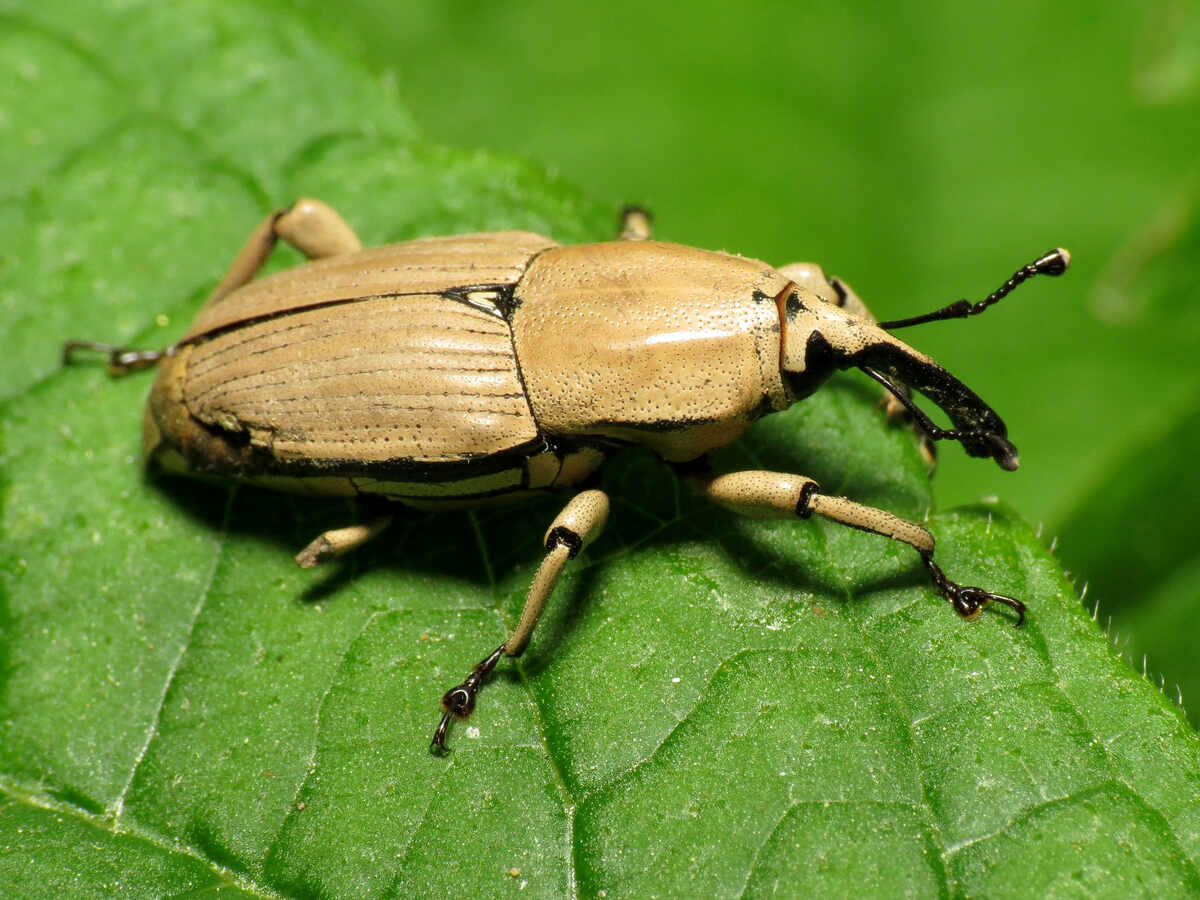
The Buckeye State can be lots of fun with its fantastic football teams and signature trees, but Ohioans also know it’s home to some pretty annoying lawn pests that can wreak havoc on your perfect lawn. So, what are some of the most common lawn pests in Ohio? And how can we defend our turf so they don’t take over? Let’s see what we can do!
3 Most Common Lawn Pests In Ohio
Late spring and summer bring with them the start of pest season in Ohio, with many bug-filled days in store. What should you look out for?
Grubs
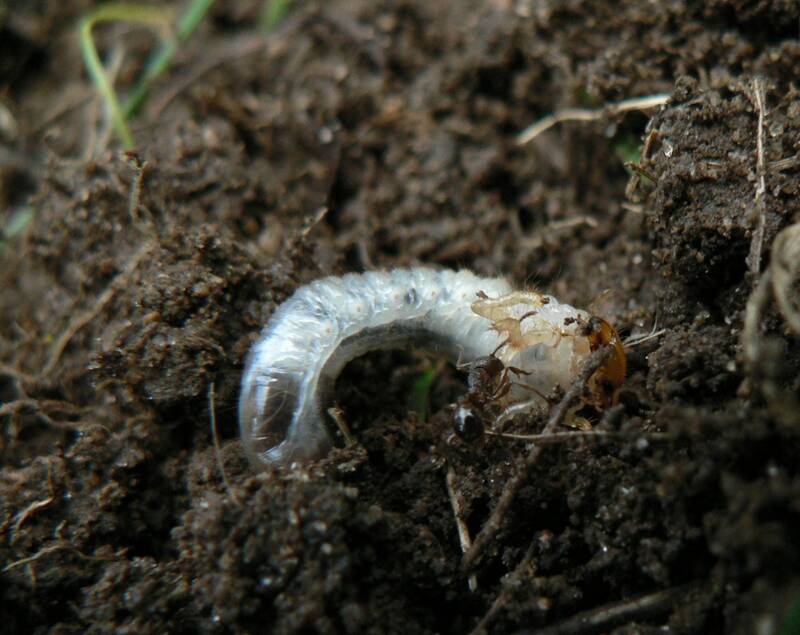
On the black list of troublesome pests, white grubs are at the top of the list. These pests, which are the larvae of Japanese beetles, masked chafers, and June beetles, can cause irregular-shaped brown patches in the lawn by feeding on the grass roots. They can kill grass by severing the root from the plant’s crown.
Sometimes the turf will re-establish itself without seeding. But if you’re faced with a grub invasion with more than ten grubs per square foot, you’re in trouble! There’s no stopping them from destroying your beautiful lawn. You’re gonna have to do some reseeding to repair the damaged areas.
July is beetles’ prime time for laying eggs, so around August is when you can expect grubs to hatch and start feeding on your lawn. They’ll hibernate deep in the soil during winter and come back to the surface to ravage your grass once again come spring.
Pro tips for managing grubs:
- Keep in mind that adult beetles don’t usually stick around where the larvae are, so it can be harder to spot them. Look for signs of damage to identify an infestation, such as patches of browning turf.
- Wasps and beneficial nematodes may help reduce grub populations. Milky spore is also effective, but it only works on Japanese beetle larvae, not other species of grubs.
Chinch Bugs
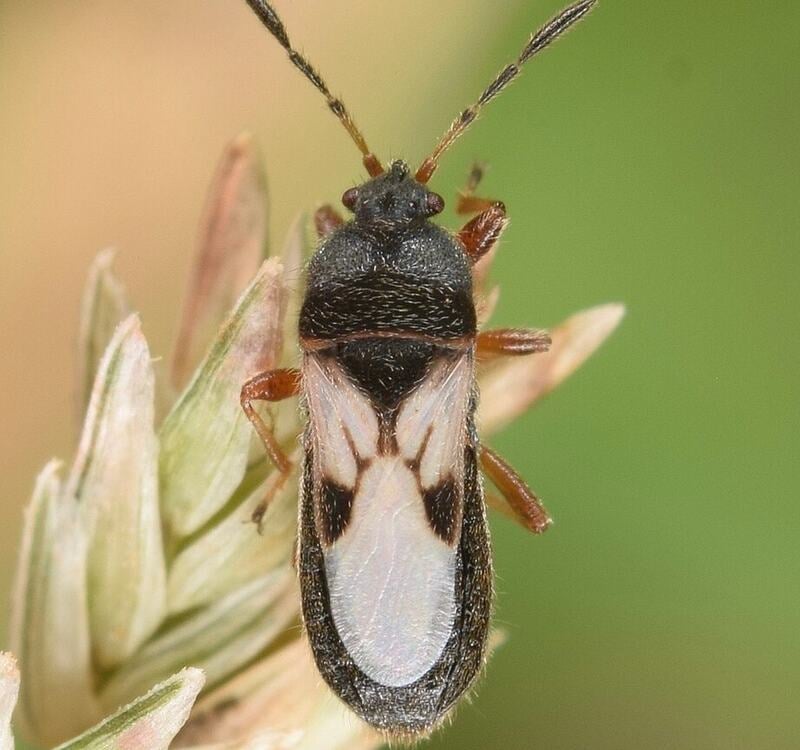
Is your lawn turning brown despite frequent watering? You might have chinch bugs. Though they often migrate to grain crops during the spring, these critters can show up on Ohio lawns once daytime temperatures consistently reach 70 degrees Fahrenheit.
Look out for black and white or reddish-brown bugs and beetle-like larvae. Young chinch bugs, also known as nymphs, may be greenish-yellow.
Chinch bug damage may occur as early as June if the weather is warm but usually doesn’t show up until July or August. To check for these buggers, pull debris from a clump of grass in your lawn and take a closer look.
Pro tips for managing chinch bugs:
- If you spot this pest early, you can manage it with the help of a pathogen, Beauveria spp., which works best in humid environments.
- To help your lawn recover from chinch bug damage, fertilize and water regularly.
- Perennial ryegrass, fine fescue, and tall fescue are some of the best grasses for Ohio that are more resistant to chinch bugs.
Billbugs
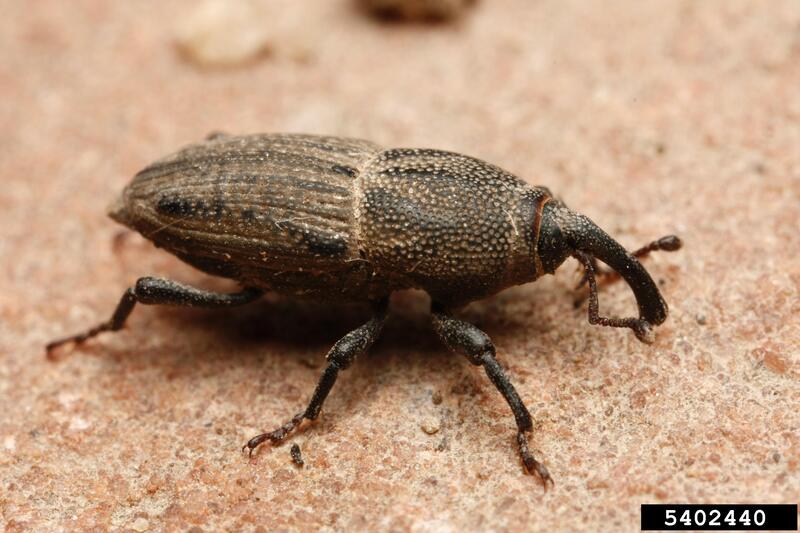
Billbugs used to be the most destructive villains of Ohio lawns. They don’t appear as much now but can still infest high-cut turf, according to Ohio State University Extension. Kentucky bluegrass seems to be their main source of nutrition.
However, they’ve been known to munch on ryegrass, red and tall fescues, as well as grains like corn, wheat, and rye. It can be tricky recognizing billbug damage because it looks like simple drought damage.
When it comes to billbugs, the adult insects aren’t to blame. The bugs do their worst damage in the larval stage. You might first notice a billbug infestation in mid-summer, from late July through August. Signs include thinning turf and irregular mottling of the grass.
Pro tips for managing billbugs:
- If you suspect billbug damage, look into some resistant turf seed varieties.
- Billbugs’ larvae look like small, legless white grubs, and the adults are dark gray to black in color and reach about a quarter of an inch long. You’re more likely to see billbugs in their adult form since the grubs live in the soil.
3 Less Common Lawn Pests in Ohio
Think you’ve heard it all? Nope, there are still other lawn insects lurking in the shadows of Ohio lawns. Let’s take a closer look at these critters, which are less common in the Buckeye State but can still cause trouble.
Sod Webworms
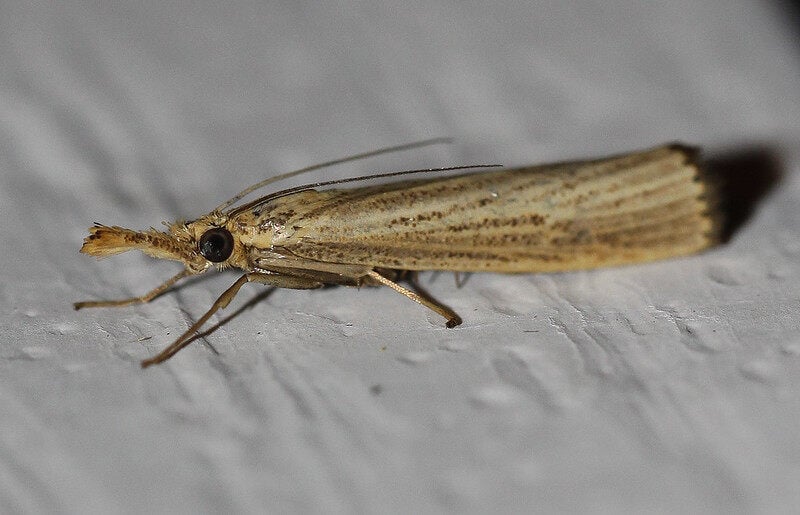
These pesky turf damagers are the grub-like larvae of the sod webworm moth. Found mainly in sunny areas, like south-facing slopes and banks, they can grow up to an inch long, with green or brown bodies and dark spots. Look closely, and you’ll spot a double “snout” on the adult moths.
Sod webworm larvae typically emerge in early spring and late summer, making quick work of your lawn and leaving brown patches. It’s rare for Ohio lawns to experience sod webworms, particularly on tall fescue. Kentucky bluegrass, perennial ryegrass, and fine fescue tend to get hit hardest.
Pro tips for managing sod webworms:
- Invite or introduce natural predators and parasites, such as predatory beetles or beneficial nematodes of the Steinernema carpocapsae species, to help reduce their population.
- In the past, people have had luck with Bt products in controlling these worms, although they don’t work on more mature larvae.
Fall Armyworms
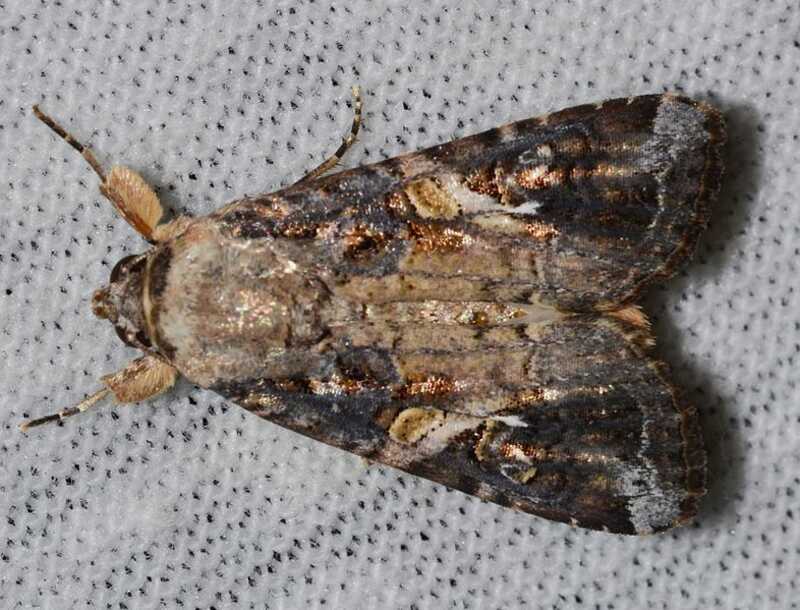
Since 2021, Ohio lawns have seen unusually high numbers of fall armyworms. These worm-like moth larvae love to feed on grass and crops and leave a trail of destruction in their wake. Homeowners are feeling the brunt of it as these insects slowly creep from one turfgrass to the next, feasting on their lawns.
You can identify armyworms by their “Y” shaped heads and three stripes down their body. But before you reach for the insecticide, consider the soapy water option instead. Soapy water will push them to the surface and make it easier to see if your lawn is being invaded.
Pro tips for managing fall armyworms:
- Keep an eye out for increased bird activity, as the birds will flock to your lawn to devour these cavalrymen.
- If birds and other natural predators don’t do enough to keep armyworms in check, insecticides with permethrin will do the job.
- If you want to go natural, use BT (Bacillus thuringiensis).
- Water your lawn sufficiently, especially during Ohio’s dry periods, to prevent armyworms in the first place.
Cutworms
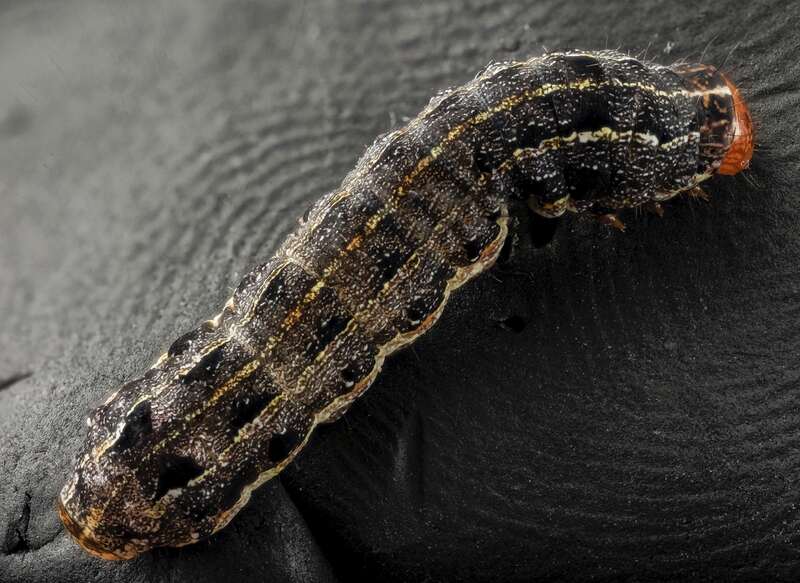
Who knew that a tiny caterpillar could do such major damage to your lawn? From late May until the end of the growing season, these grubby lawn pests can wreak havoc on maintained turf areas in Ohio. They also affect other garden plants.
These nasty little guys can be identified by their round shape and tendency to curl up into a “C” when disturbed. Their exteriors can range from black to brown to white. Most often, it’s Kentucky bluegrass and bentgrass that take the brunt of their feeding.
So, how do you know if cutworms have moved in? Check for plants that get cut off near the ground or wilting plants, as those are usually clear signs that cutworms have been munching away. What’s more, if you find droppings on your turf, then you’ve got your answer. Don’t let the problem linger, as the pests can do more damage if left unchecked.
Pro tips for managing cutworms:
- Nighttime is the best time to tackle these pests. Grab a flashlight and some gloves to pick them off your plants, then drop them into a bowl of soapy water.
- Surround your stems with D.E., a natural powder made from ground-up diatoms. This powder acts like a shield and gives you that extra layer of protection. Plus, it’s super simple – just sprinkle it around the stems.
Why Worry About Lawn Pests?
In Ohio, there’s always something moving and crawling in our gardens and lawns. Some of them are helpful, like butterflies and bees that pollinate our plants. But a lot of them don’t contribute anything beneficial and can cause serious damage when they’re present in high numbers.
The dream turf that you so carefully cultivated in the spring can turn into a nightmare before you know it. According to Doug Evans, a certified International Society of Arboriculture Arborist and Plant Health Manager at Lawn-Plus LLC in Cincinnati, Ohio, it can take up to two growing seasons for a lawn’s visual appearance to recover from damage caused by an invasive pest.
As spring begins and the weather warms, insects begin to make their presence known. While some might just buzz around for a few days, others, like the notorious chinch bug, sod webworm, and billbug, can really make a mess of your lawn. These pests can cause:
- Yellow or dead patches
- Grass root damage
- Thinning, dying grass
Knowing what kinds of bugs are in your garden or lawn and taking preventive measures to make sure your lawn stays lush and healthy is the best way to combat these uninvited guests.
However, not all bugs are bad, and your lawn actually thrives when a variety of beneficial insects are present. For example, ground and rove beetles contribute to the breakdown of organic matter and also act as prey for potential pests like lawn caterpillars and white grubs.
Of course, lawn care in Ohio requires more than just keeping watch for destructive insects. Taking steps to protect your grass from fungal diseases can give you an extra layer of protection against pests. Rainy seasons are especially prone to an increased presence of fungal diseases.
Lawn Pest Control in Ohio
If only it were as easy to get rid of those pesky pests in Ohio lawns as it is to spot them! Don’t be alarmed, though. Professional pest control specialists can come to the rescue, armed with strategies to save your grass from whatever may be plaguing it. Getting informed is the first step to successfully tackling lawn pests in Ohio.
Talk to a licensed lawn care professional and determine what population levels of the insect you’re dealing with and what’s the best treatment plan for those critters. Pesticides can be both preventive and active when it comes to infestation, but make sure to read the directions carefully before you spray for the safety of your lawn and yourself.
However, one common mistake when it comes to dealing with lawn pests is mistiming the treatments. Treatments should correspond to the life cycle of the pest, and if you miss the right window, the effectiveness of your product might be limited – or it may not work at all. That’s why working with a pro can be beneficial.
FAQ
Proper steps to prevent and get rid of lawn pests include:
• Regularly inspect your lawn and determine the type of pest you’re dealing with
• Use natural pest control products where possible
• Mow and water your lawn regularly
• Call in natural pest predators, such as birds and beetles
• Get advice from your local nursery or an Ohio lawn care pro
That depends on what type of damage you’re seeing on your grass. It could be a number of things, from grubs to chinch bugs. Study the damage to narrow down your search, and then get advice from a local lawn care service.
The answer to that depends on what type of grass bug you are seeing in Ohio. Some common grass bugs in Ohio include:
• Grubs – They look like small white worms with brown heads.
• Chinch Bugs – These pests are black and white or reddish-brown in color and are beetle-like in shape.
• Billbugs – These critters are usually dark gray to black in color and reach around a quarter of an inch in length.
• Sod Webworms – These worms are grubs of the sod webworm moth and are usually green or brown.
Of the best grass types for Ohio, the most pest-resistant options are fine fescues, tall fescue, and perennial ryegrass.
Since many lawn pests will overwinter in your yard, it’s important to make sure the lawn is not attractive or hospitable to them. If you prepare your Ohio lawn for winter properly by cleaning up leaves, overseeding, and watering the right amount, your yard is less likely to host pests during winter. In any season, healthy lawns are not typically attractive to pests, so stay on top of lawn maintenance all year.
Final Thoughts
Fighting pesky critters in your lawn can be tough, but it’s far from impossible. Stay on top of your lawn care and always irrigate and fertilize when needed. Be sure to watch out for any signs of lawn pest damage, and get familiar with the typical pests of Ohio.
If you need help, you can always call in the lawn care experts, whether you’re in Cleveland, Columbus, Akron, or Cincinnati.
Main Image Credit: Billbug / Katja Schluz / Flickr / CC BY 2.0